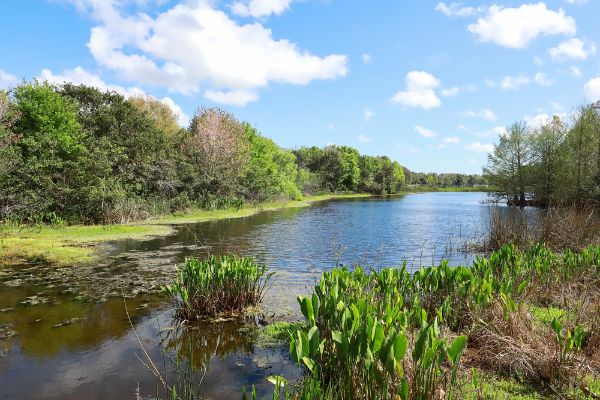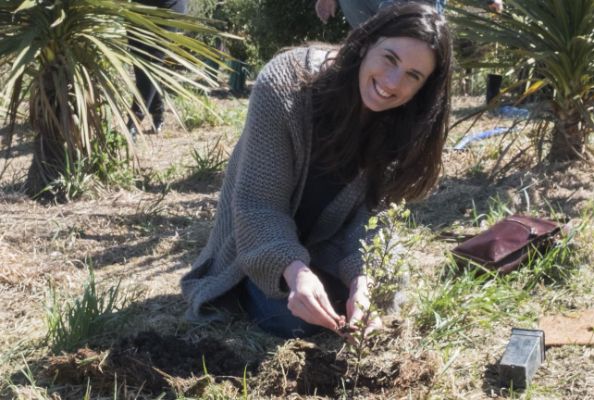Constructed Wetlands Could Reduce Nitrate Levels


A recent presentation on the benefits of integrated constructed wetlands by wetland scientist Dr Michelle McKeown of science and engineering consultancy Wallbridge Gilbert Aztec (WGA) has prompted the Waimakariri Water Zone Committee to consider the possibility of a pilot project which would aim to reduce nitrate, phosphorous, sedimentation and E. coli levels in local waterways, while improving biodiversity in the district
An integrated constructed wetland is an engineered water treatment system that uses vegetation and microbes in the soil to treat water from farms and other sources while also integrating the wetland structure into the surrounding landscape fabric. These wetlands, which have been used in Ireland, the USA, and the UK since around 2007, act as a biofilter to remove suspended solids, pathogens, and nutrients from waterways.
Waimakariri Zone Committee Chair Michael Blackwell says he is excited by the potential of integrated constructed wetlands to improve rivers and streams and to be incorporated with the vision of Te Mana o te Wai as a vehicle for our community to move forward together on improving the water quality of our rivers and streams, while also providing valuable recreational, cultural, and educational opportunities.
“Wetlands are the kidneys of our ecosystem, and we’ve already lost over 90 per cent of our wetlands across New Zealand. It’s important to think outside the box to reduce contaminants and increase biodiversity values.
“We can also learn from current projects underway elsewhere in Canterbury including the Whakaora Te Ahuriri project near Lake Ellesmere which will create a constructed wetland at Ahuriri Lagoon to improve mahinga kai, water quality and biodiversity values.”
Michelle describes the concept as a “reanimation” of the landscape using an approach that not only integrates ecologists, soil scientists, hydrologists, and engineers but also the community. People can have an active input into what they would like the space to be used for recreationally, while also delivering key environmental benefits to society. Constructed wetlands do not provide all the benefits of a natural wetland but in areas where wetlands have been completely lost, they can provide an alternative to traditional wastewater treatment plants.
“We facilitate natural processes through an engineered ecosystem-based approach, which act as landscape kidneys to filter nutrients from water, which is carried out by vegetation and microorganisms living in the soil.
“These systems can also act to sequester carbon through capturing and storing atmospheric carbon dioxide in their highly organic soils. The carbon is essentially locked into the system. Their carbon sequestration potential works in a similar way to forests and there is a real potential that these integrated constructed wetlands could qualify for carbon credits in the same way forests do.
“People lead the design in terms of how they want to use the space. Instead of the traditional model of separating people from water treatment facilities, this approach includes recreational, cultural, and educational aspects such as walking tracks, biota nodes for school groups to manage, and a place to share cultural history and practices.”
Michelle says spending an adequate amount of time on planning and research cannot be underestimated when it comes to designing a successful integrated constructed wetland. Factors such as the size of the wetland and land type are key during this process, along with consideration for consent requirements to ensure that any development does not have adverse impacts.
“The planning phase is absolutely vital. You need to spend a good amount of time consulting with the community, experts and iwi and get everyone to decide on the purpose and use of the wetland area.”
“The size of each wetland is determined by the level of contaminants entering the land area. You need the right amount of land to purify the contaminated water. Through a series of interconnected wetland cells, that mimic marsh wetlands, you can achieve a reduction in contaminant levels. For them to operate effectively you need to get the balance right between the functional benefits of natural wetlands (vegetation diversity and the appropriate substrate) and the engineered design (ensuring water is flowing correcting through the system).
“The wetland cells should ideally be on flat land to ensure the water does not short-circuit and takes time to move slowly through the vegetation and soil. This slow movement of water in this zone is where the contaminants are removed. Thus, the flat land of Canterbury is an excellent place to implement this concept”.
Features such as islands (for bird habitat) and walkways can be incorporated into the design, however, Michelle notes that the location of such features needs to fit within the entire ecosystem, rather than being viewed purely from an aesthetical perspective.
“Having an island can be attractive and provide habitat for birds. However, if it is placed too close to the end of the system you can have issues with faecal contamination from birds, so you need to consider the entire design of the system before you begin construction and how each aspect interacts with other areas of the wetland.”
Michelle is currently working on developing a pilot project concept with interested parties in Waimakariri and hopes that her vision can become a reality.
“It would be so exciting to see this happen as there are many benefits for the land, water and the local community.”


 Gordon Campbell: On The New Pope, And The Israeli Attack On Peter Davis
Gordon Campbell: On The New Pope, And The Israeli Attack On Peter Davis New Zealand Labour Party: Labour Asks Why Govt Is Silent On Gaza
New Zealand Labour Party: Labour Asks Why Govt Is Silent On Gaza Transport Accident Investigation Commission: Near-Collision Highlights Safety Lessons For All Busy, Unattended Aerodromes
Transport Accident Investigation Commission: Near-Collision Highlights Safety Lessons For All Busy, Unattended Aerodromes Green Party: Wildlife Law Change A Deep Betrayal Of Public Trust
Green Party: Wildlife Law Change A Deep Betrayal Of Public Trust NZCTU: Unions Launch Petition To Protect Pay Equity
NZCTU: Unions Launch Petition To Protect Pay Equity Greenpeace: Greenpeace Slams PM’s Science Pick - 'Polluters Are Running The Show'
Greenpeace: Greenpeace Slams PM’s Science Pick - 'Polluters Are Running The Show' NZ Government: PM’s Science Prizes Celebrate Excellence
NZ Government: PM’s Science Prizes Celebrate Excellence


